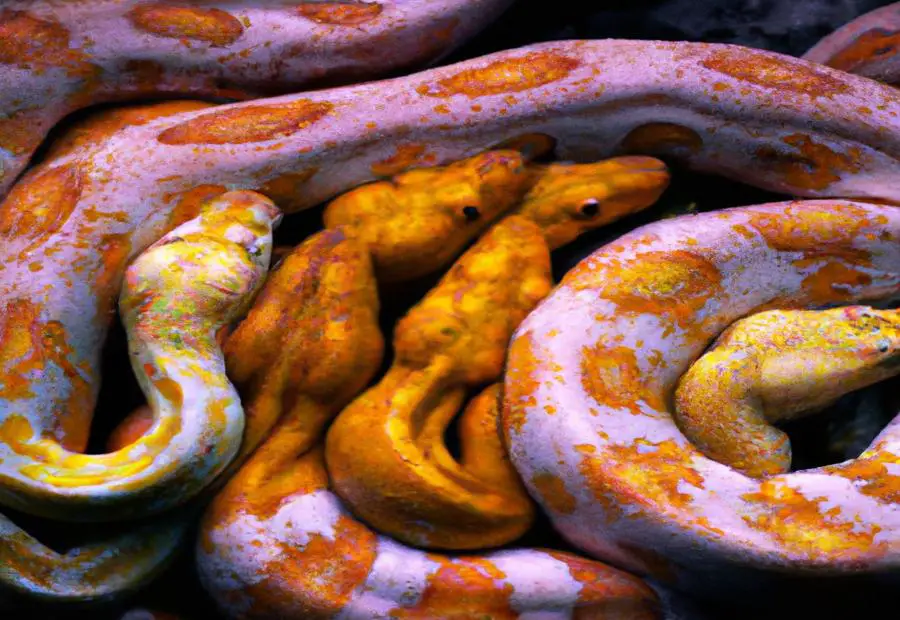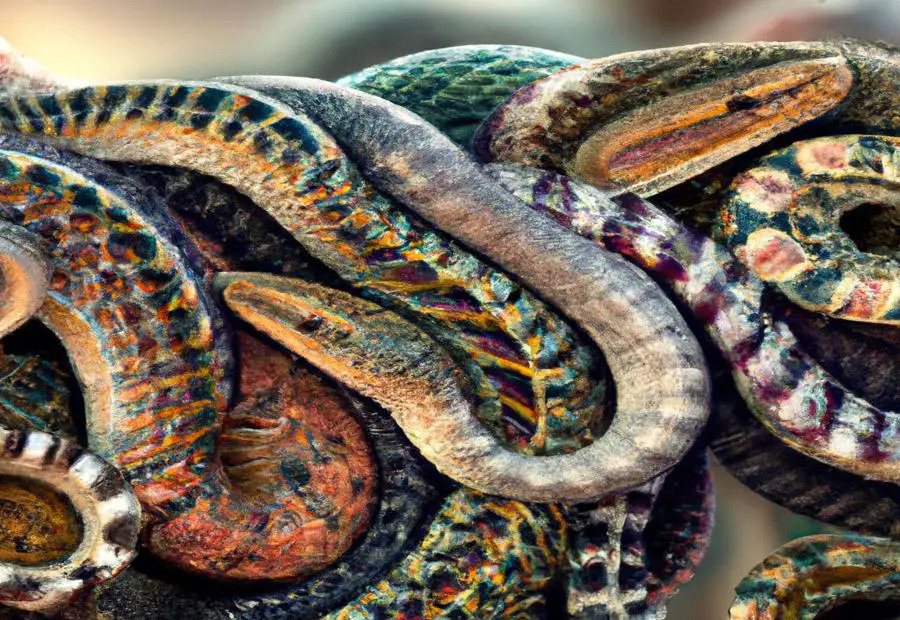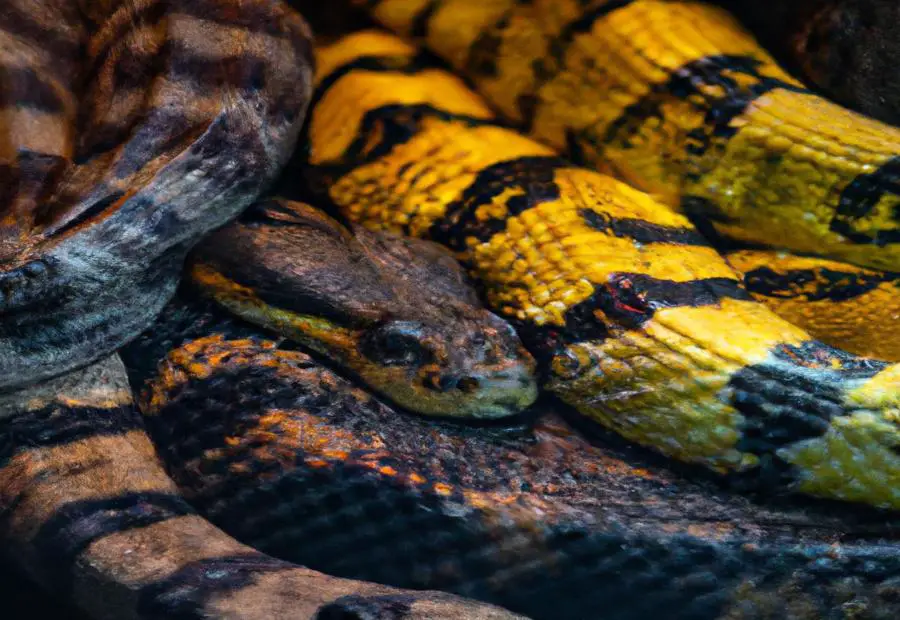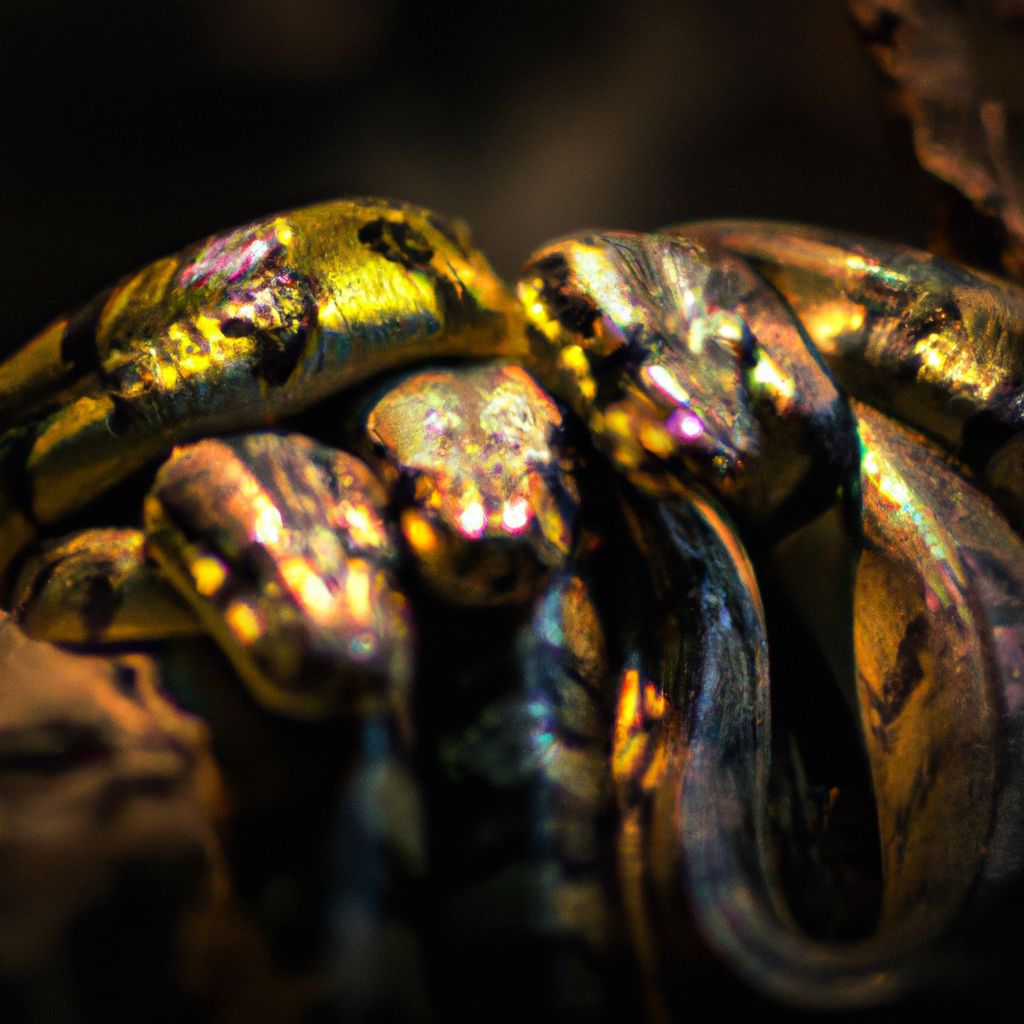Collective nouns, also known as terms of venery, are fascinating linguistic constructs that refer to groups of animals, objects, or people. When it comes to snakes, there are specific collective nouns used to describe a gathering or group of these slithering creatures. Understanding these collective nouns for snakes can add a touch of curiosity and intrigue to our knowledge of these reptiles.
What is a Collective Noun?
Before delving into the specific collective nouns for snakes, let’s first explore the definition of a collective noun. A collective noun is a singular word that is used to represent a group or collection of individuals or objects. It serves as a convenient way to refer to a group as a singular entity.
What is a Group of Snakes Called?
Now, let’s uncover the collective nouns associated with groups of snakes. There are common collective nouns that are widely used to describe a group of snakes, as well as unusual and rare collective nouns that add a touch of uniqueness to the language of snakes.
Why Do Collective Nouns Exist?
The existence of collective nouns traces back to historical origins tied to hunting, medieval language, and the desire to create colorful and imaginative descriptions for groups of animals. Understanding the historical background of collective nouns provides insight into their role in language.
Fun Facts about Snake Collective Nouns
Apart from their linguistic significance, collective nouns for snakes also offer interesting insights and trivia. Exploring fun facts related to snake collective nouns can broaden our understanding and appreciation of the language used to describe these creatures.
How Are Collective Nouns Used in Language?
Collective nouns are not only limited to describing groups of animals; they also have practical applications in everyday language. Examples of collective nouns in sentences demonstrate how these words are used to convey meaning and simplify communication.
The Evolution of Collective Nouns for Snakes
Collective nouns have evolved over time, and the same applies to those used for snakes. Examining the evolution of collective nouns for snakes sheds light on the dynamic nature of language and the creativity inherent in describing groups of animals.
By unraveling the collective nouns for snakes, we can gain a deeper understanding of their linguistic significance, historical background, and the intriguing way language captures the essence of these slithering creatures.
Key takeaway:
- A group of snakes is called a collective noun.
- Common collective nouns for snakes include nest, den, and bed.
- Unusual and rare collective nouns for snakes include a knot, pit, and quiver.
Introducing Collective Nouns for Snakes
Introducing Collective Nouns for Snakes
Snakes have unique collective nouns to describe groups of them. These nouns add an interesting twist to our understanding of these creatures.
A den is a common collective noun for snakes. It refers to a group of snakes that live together in underground burrows or other sheltered areas. Another collective noun is a bed of snakes, which describes a group of snakes coiled or intertwined together, resembling a bed of slithering reptiles.
Snakes can also be referred to as a nest when they are seen together in a tangled mass. This term is often used to describe a group of snakes found during their breeding season, where they come together to reproduce and care for their young.
These collective nouns for snakes add intrigue to the world of these creatures. So, when you come across a group of snakes, impress your friends by using these unique collective nouns.
What is the Definition of a Collective Noun?
A collective noun, as the definition implies, refers to a group or collection of individuals or things. It accurately represents a singular entity comprising multiple parts. Collective nouns find common usage when referring to groups of animals, people, or objects. Notable examples include a flock of birds, a herd of cattle, and a team of players. With these nouns, we can express a single entity made up of many individuals.
Furthermore, collective nouns can also encompass abstract concepts or ideas. For instance, a committee of experts, an army of soldiers, and a bouquet of flowers symbolize groups with a shared purpose or characteristic.
Using collective nouns provides a concise way to communicate about groups without mentioning each individual member. It streamlines our language and enables efficient expression of ideas.
It is worth noting that collective nouns were introduced during Middle English and have since become an integral part of everyday communication in the English language.
What is a Group of Snakes Called?

Photo Credits: Ruggedreptiles.Com by Adam Torres
Ever wondered what to call a bunch of snakes hanging out together? Let’s dive into the intriguing world of collective nouns for snakes. From the common terms we often encounter to the unusual and rare expressions, we’ll unearth the fascinating ways people have creatively named groups of these slithering creatures. Get ready for a mind-bending journey through the captivating realm of snake collective nouns!
Common Collective Nouns for Snakes
A group of snakes is commonly called a “nest” or a “den“.
Snakes can also be referred to as a “bed” when resting together.
Some people may use the term “coil” to describe a group of snakes, especially when tangled or intertwined.
In certain contexts, a group of snakes may also be called a “pits” or a “slither“.
When snakes gather in large numbers, they can be referred to as a “swarm” or a “tangle“.
Occasionally, a group of snakes may be described as a “ribbon“, especially when seen moving together in a line.
Unusual and Rare Collective Nouns for Snakes
When it comes to unusual and rare collective nouns for snakes, there are some that are not commonly known. Here are a few examples:
– A quiver of snakes
– A den of snakes
– A nest of snakes
– A bed of snakes
– A knot of snakes
These collective nouns can add interesting and descriptive language when referring to a group of snakes.
In ancient Greek mythology, snakes were believed to be associated with wisdom and healing. This belief led to the creation of various collective nouns related to snakes in ancient Greek language. The influence of Greek mythology on language and culture can be traced back to the unusual and rare collective nouns for snakes. Over time, these collective nouns became less common in everyday usage, but they still add a touch of mystery and fascination to the world of snakes.
Why Do Collective Nouns Exist?

Photo Credits: Ruggedreptiles.Com by Alexander Sanchez
Have you ever wondered why collective nouns exist? In this intriguing section, we’ll uncover the fascinating historical background of these unique linguistic phenomena. Get ready to travel back in time and discover the origins and evolution of collective nouns, adding a whole new layer of appreciation to the distinct way we refer to groups of snakes and other creatures. So, let’s delve into the captivating story behind collective nouns and unravel their purpose in our language.
Historical Background of Collective Nouns
The historical background of collective nouns is deeply rooted in the development of English, which was heavily influenced by Latin and French. During the Middle Ages, Latin served as the language of the church and learning, while French was associated with the elite and courtly life. Consequently, collective nouns started to emerge in the English language, mimicking the collective forms found in Latin and French.
In the 15th and 16th centuries, collective nouns were utilized to describe groups of animals, including snakes. These nouns, often derived from Latin or French, brought diversity and elegance to the English language. Over time, these collective nouns became more widely used and accepted.
The historical background of collective nouns highlights the evolution and adoption of linguistic concepts from other languages. Furthermore, it reflects the fascinating history and cultural exchange that shaped the English language.
For further exploration of the historical background of collective nouns, one may delve into researching the specific origins of collective nouns for snakes or examining the use of collective nouns in other languages. Such investigation can greatly enhance our understanding of how language evolves and adjusts over time.
Fun Facts about Snake Collective Nouns

Photo Credits: Ruggedreptiles.Com by Ryan Anderson
Snake collective nouns offer insight into the social behavior and communal aspects of these fascinating reptiles. Here are some interesting facts:
- Fun fact: A group of snakes is called a den or a bed.
- Fun fact: A den or bed of snakes is usually not a large group.
- Fun fact: A den of snakes can consist of a few individuals or a small family group.
- Fun fact: Some snake species, like garter snakes, hibernate together in dens during winter.
- Fun fact: In some cases, a den of snakes share a common burrow or hiding place.
- Fun fact: Snake dens can also serve as a place for mating or giving birth.
- Fun fact: Snakes in a den or bed may exhibit cooperative behavior, such as sharing warmth or protecting each other.
- Fun fact: Collective nouns for snakes emphasize the importance of finding shelter and their social behavior.
- Fun fact: Observing the dynamics and interactions within a den of snakes is fascinating.
How Are Collective Nouns Used in Language?
Ever wondered how collective nouns are used in language? In this section, we’ll dive into the fascinating world of collective nouns and explore their role in our everyday communication. Get ready to uncover some intriguing examples of how these unique linguistic constructs bring groups of snakes and other creatures to life within sentences. So, without further ado, let’s embark on this linguistic journey and unravel the secrets of collective nouns!
Examples of Collective Nouns in Sentences
Here are some examples of collective nouns in sentences:
- A swarm of bees flew past my window.
- A herd of cows grazed peacefully in the field.
- In the ocean, a pod of dolphins were seen swimming.
- A flock of birds flew in a V-shape formation.
- A pack of wolves howled at the full moon.
- The teacher asked students to form a circle.
- After a long chase, the police arrested robbers in a gang.
- We watched a squadron of fighter jets perform aerobatic stunts.
- A colony of ants worked together to build their nest.
- The museum had a collection of ancient artifacts on display.
The Evolution of Collective Nouns for Snakes
The evolution of collective nouns for snakes has been influenced by linguistic and cultural factors. In the past, collective nouns for snakes were based on their behavior or anatomy. For example, a “nest” of snakes referred to a group of snakes coiled together, while a “den” of snakes denoted a group sheltering in a shared location.
Over time, these collective nouns have evolved to reflect a deeper understanding and appreciation of snakes. Collective nouns such as a “slither” or a “bed” of snakes have emerged to capture the graceful movement and communal nature of these reptiles. These new collective nouns highlight the importance of snakes in ecosystems and their interconnectedness with other species.
The evolution of collective nouns for snakes also reflects changing attitudes towards these creatures. Previously associated with fear and danger, snakes are now recognized for their ecological significance and captivating beauty. The emergence of collective nouns that evoke intrigue and fascination, such as a “tangle” or a “curiosity” of snakes, reflects this shift in perception.
Some Facts About What Is a Group of Snakes Called? Collective Nouns Unraveled:
- ✅ A group of snakes can be called a den, ball, nest, or slither. (Source: Our Team)
- ✅ The term “den” refers to a group of snakes living together in a burrow or hole. (Source: Our Team)
- ✅ When snakes are tangled with each other and forming a ball with their bodies, it means they are mating, and it is called a “ball of snakes.” (Source: Our Team)
- ✅ Snakes build nests to lay their eggs and stay with them until they hatch, and a group of snakes in a nest is called a “nest of snakes.” (Source: Our Team)
- ✅ Snakes move in an oscillating manner and a group of them is called a “slither of snakes.” (Source: Our Team)
Frequently Asked Questions
What is a group of snakes called?
A group of snakes can be called a den, bed, pit, nest, knot, or Rhumba, depending on the species.
What is the meaning of the term “den” when referring to snakes?
A den refers to a group of snakes living together in a burrow or hole.
Why are there different collective nouns for groups of snakes?
Different collective nouns exist to describe different scenarios and behaviors of snakes, allowing for clearer communication when discussing groups of snakes.
Are snakes social animals?
No, snakes are typically solitary animals, except for certain species like Garter snakes, which are social.
Do all snakes lay eggs?
No, while many snake species lay eggs, some snakes give birth to live young.
Are snakes dangerous to humans?
While about 600 snake species are venomous, only about seven percent can kill or wound a human. Snakes bite up to a million people each year, resulting in a significant number of deaths.


